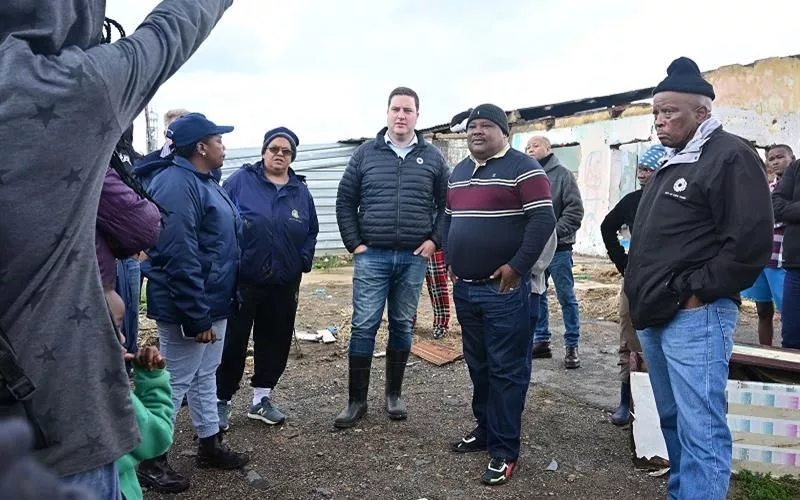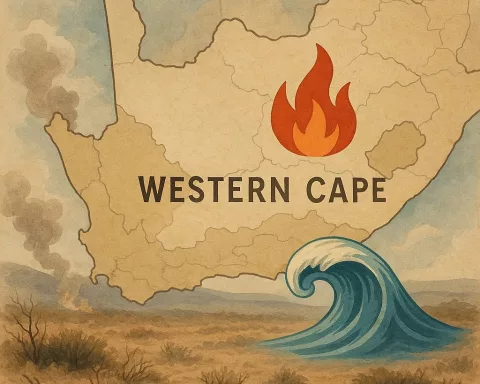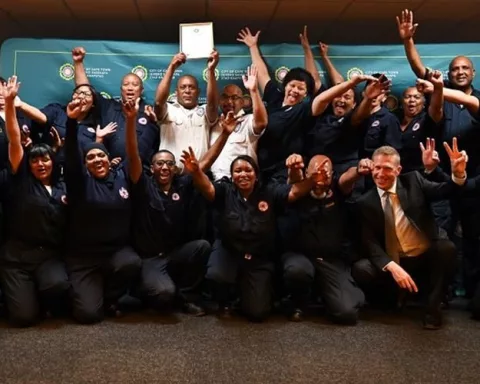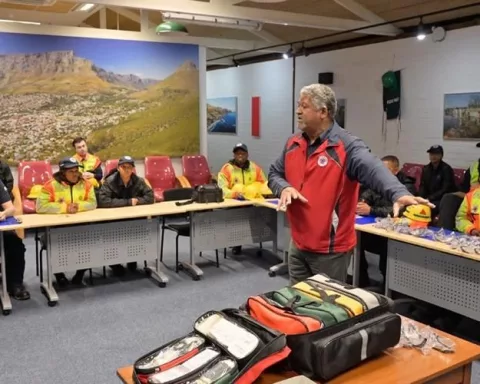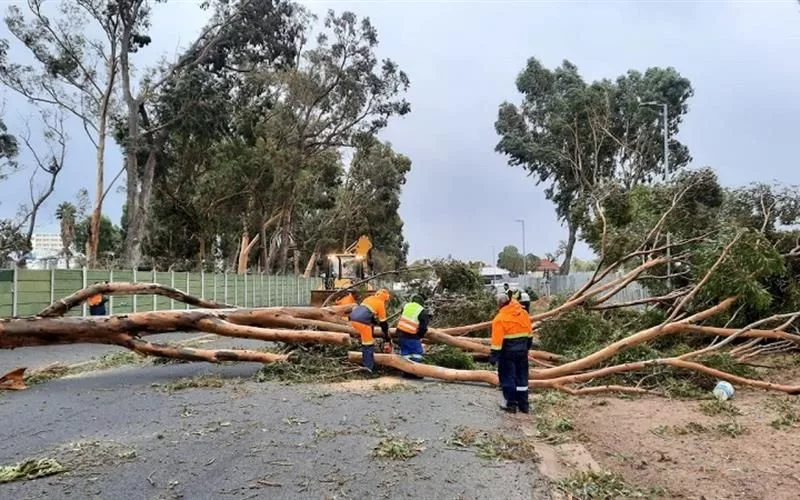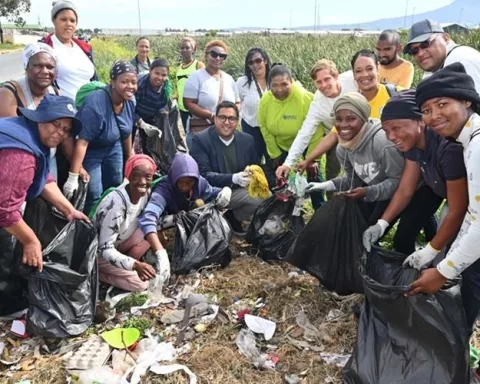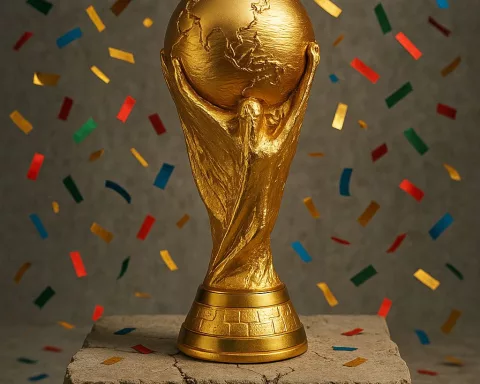Cape Town faced a severe metro-scale storm causing power outages, structural damage, and potential flooding. Mayor Geordin Hill-Lewis and his team of city workers responded promptly, overseeing emergency responses, collaborating with NGOs, and evaluating damage. The residents were advised to report emergencies and refrain from non-essential travel. The city’s resilience, preparedness, and community collaboration were demonstrated in this exemplary disaster management.
Cape Town was hit by a severe metro-scale storm resulting in structural damage, power outages, and potential flooding. Mayor Geordin Hill-Lewis and his team of city workers responded promptly, overseeing emergency responses, collaborating with NGOs, and evaluating damage. The residents were advised to report emergencies and refrain from non-essential travel. Electricity was restored in many areas, and the residents were encouraged to report faults through dedicated channels. The city’s resilience, preparedness, and community collaboration were demonstrated in this exemplary disaster management.
Mayor and City Teams Respond to Storm
In the early hours of an unusually frigid April morning, Geordin Hill-Lewis, the Mayor of Cape Town, was absorbed in managing the city’s reaction to a catastrophic storm that had engulfed the entire metro area. He positioned himself tactically in the Helderberg district, a region of the city notorious for being greatly affected by such stormy conditions. Assisting him was a reliable team of city workers who, with their 24/7 commitment, became an indispensable part of this daunting mission.
The Disaster Risk Management coordination center, located in Goodwood, served as the heart of the operation. After an exhaustive briefing at the center, the Mayor, accompanied by the city teams, embarked on an extensive survey to assess the structural damage in various parts of the city. Among the areas that bore the brunt of the storm were the Nomzamo informal settlement, Morkel’s Cottages, and certain sections of the Strand area.
Mayor Hill-Lewis’s appreciation for the frontline service personnel was profoundly evident as they worked relentlessly under challenging and often hazardous circumstances throughout the metro. His day was largely spent overseeing the teams working in informal settlements like Nomzamo and Morkel’s cottages. The teams had multiple responsibilities, ranging from executing emergency responses and collaborating with NGOs for aid to evaluating the severity of damage to residents’ homes.
Warnings and Advice for Residents
The inhabitants of the city were cautioned about the possibility of flooding, especially in the low-lying regions of the Helderberg. They were also strongly advised to refrain from non-essential travel because of the perilous state of the roads. For those who had no choice but to travel, they were reminded to use their vehicle’s headlights to enhance visibility.
Mayor Hill-Lewis emphasized to the residents the criticality of reporting all emergencies to the City’s Public Emergency Centre. In order to facilitate efficient communication during this arduous period, a dedicated helpline (021 480 7700) was established.
The storm had left its mark everywhere. Roads like Chapman’s Peak and Clarence Drive had to be closed due to the harsh weather conditions and the potential for rockfalls. Despite Baden Powell Drive and Kloof Road being cleared of debris and reopened, Hout Bay Main Road remained inaccessible due to ongoing repair work on a burst pipe. Cape Town Traffic also issued warnings about the possible repercussions of localized flooding.
Restoration of Electricity Supply
Another hurdle was the power supply. By the early afternoon, electricity had been restored in many of the roughly 30 areas impacted by the storm. The restoration process in the remaining areas was underway, with strict adherence to safety protocols. The areas affected stretched from Philippi, Mfuleni, and Strand/Lwandle to Somerset West, Gordon’s Bay, and Silvertown, to name a few.
Councillor Beverley van Reenen, the City’s Mayoral Committee Member for Energy, emphasized the challenging nature of restoring electricity in such unfavorable conditions. In her statement, she said, “Repairing damaged infrastructure usually takes a while. Harsh weather conditions result in an influx of service requests and prolonged power outages.” She thanked the residents for their patience and advised them to use one reporting channel when reporting faults to the city to prevent delays caused by multiple service requests.
The residents were encouraged to report service requests through call, SMS, email, or e-Services. The dedicated channels included a Call Centre helpline (0860 103 089), an SMS service (31220), an email address (power@capetown.gov.za), and e-Services via the city’s website.
Cape Town’s Resilience in the Face of Adversity
This storm response operation, spearheaded by Mayor Geordin Hill-Lewis, depicted a city that stands united in hardship. This was a testament to Cape Town’s resilience and emphasized the significance of preparedness, effective communication, and community collaboration in tackling natural disasters. The city’s reaction served as an exemplary demonstration of efficient disaster management. It promptly addressed structural damages, potential flooding, and power outages while maintaining open and clear communication lines with its residents.
1. What was the cause of the severe storm that hit Cape Town?
Cape Town was hit by a severe metro-scale storm.
2. How did the Mayor and city teams respond to the storm?
Mayor Geordin Hill-Lewis and his team of city workers responded promptly, overseeing emergency responses, collaborating with NGOs, and evaluating damage. They embarked on an extensive survey to assess the structural damage in various parts of the city.
3. What warnings and advice were given to residents during the storm?
Residents were warned about the possibility of flooding, especially in the low-lying regions of the Helderberg. They were also advised to refrain from non-essential travel due to the perilous state of the roads. The residents were encouraged to report all emergencies to the City’s Public Emergency Centre (021 480 7700).
4. How was electricity supply restored during the storm?
By the early afternoon, electricity had been restored in many of the roughly 30 areas impacted by the storm. The restoration process in the remaining areas was underway, with strict adherence to safety protocols. The residents were advised to use one reporting channel when reporting faults to the city to prevent delays caused by multiple service requests.
5. How did Cape Town exhibit resilience in the face of the storm?
Cape Town’s resilience and preparedness were demonstrated through effective communication, community collaboration, and efficient disaster management. Mayor Hill-Lewis’s appreciation for the frontline service personnel was profoundly evident as they worked relentlessly under challenging and often hazardous circumstances throughout the metro.
6. How can residents report service requests during a natural disaster?
The residents were encouraged to report faults through dedicated channels, including a Call Centre helpline (0860 103 089), an SMS service (31220), an email address (power@capetown.gov.za), and e-Services via the city’s website.

